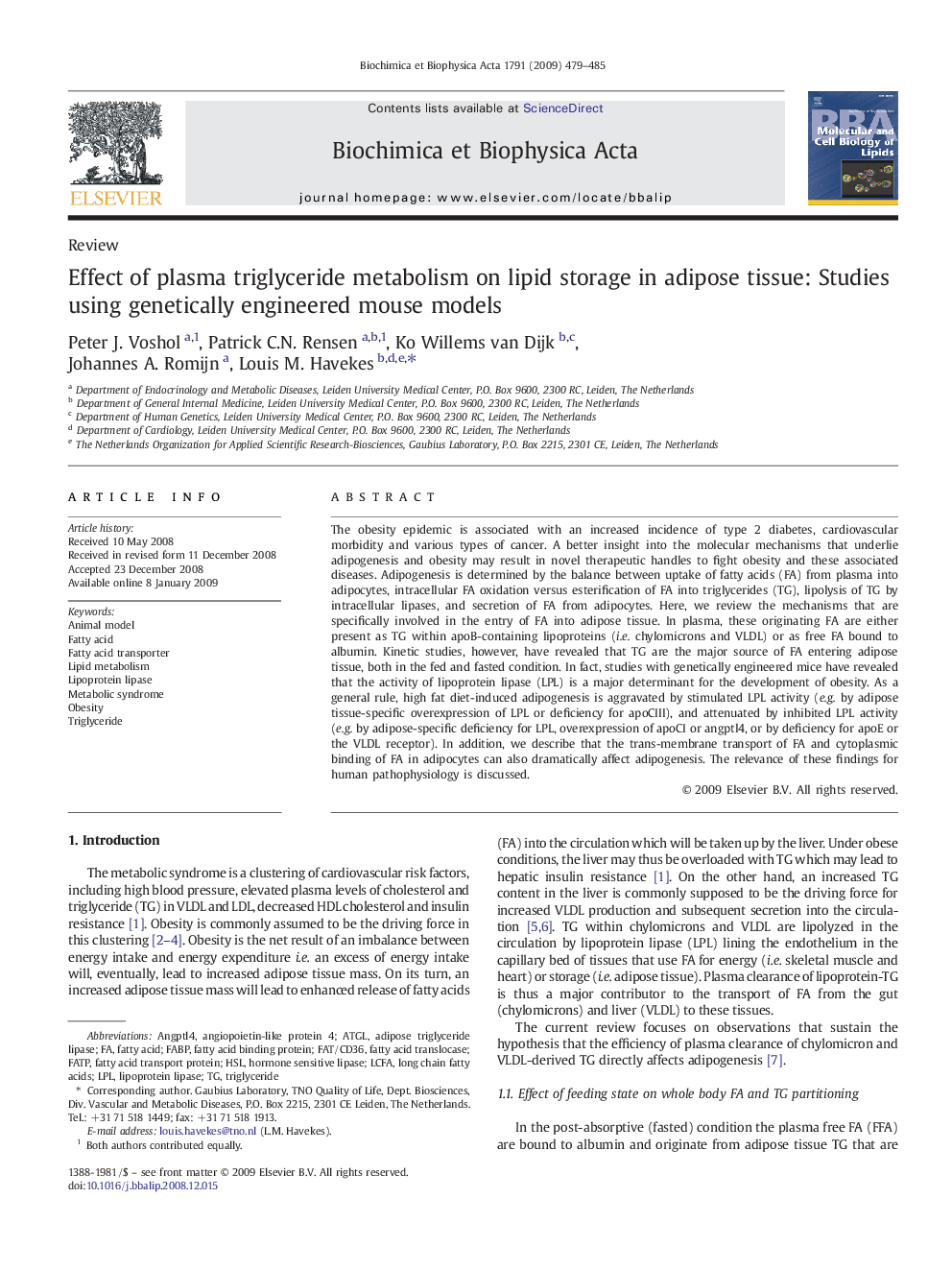| Article ID | Journal | Published Year | Pages | File Type |
|---|---|---|---|---|
| 1949933 | Biochimica et Biophysica Acta (BBA) - Molecular and Cell Biology of Lipids | 2009 | 7 Pages |
The obesity epidemic is associated with an increased incidence of type 2 diabetes, cardiovascular morbidity and various types of cancer. A better insight into the molecular mechanisms that underlie adipogenesis and obesity may result in novel therapeutic handles to fight obesity and these associated diseases. Adipogenesis is determined by the balance between uptake of fatty acids (FA) from plasma into adipocytes, intracellular FA oxidation versus esterification of FA into triglycerides (TG), lipolysis of TG by intracellular lipases, and secretion of FA from adipocytes. Here, we review the mechanisms that are specifically involved in the entry of FA into adipose tissue. In plasma, these originating FA are either present as TG within apoB-containing lipoproteins (i.e. chylomicrons and VLDL) or as free FA bound to albumin. Kinetic studies, however, have revealed that TG are the major source of FA entering adipose tissue, both in the fed and fasted condition. In fact, studies with genetically engineered mice have revealed that the activity of lipoprotein lipase (LPL) is a major determinant for the development of obesity. As a general rule, high fat diet-induced adipogenesis is aggravated by stimulated LPL activity (e.g. by adipose tissue-specific overexpression of LPL or deficiency for apoCIII), and attenuated by inhibited LPL activity (e.g. by adipose-specific deficiency for LPL, overexpression of apoCI or angptl4, or by deficiency for apoE or the VLDL receptor). In addition, we describe that the trans-membrane transport of FA and cytoplasmic binding of FA in adipocytes can also dramatically affect adipogenesis. The relevance of these findings for human pathophysiology is discussed.
